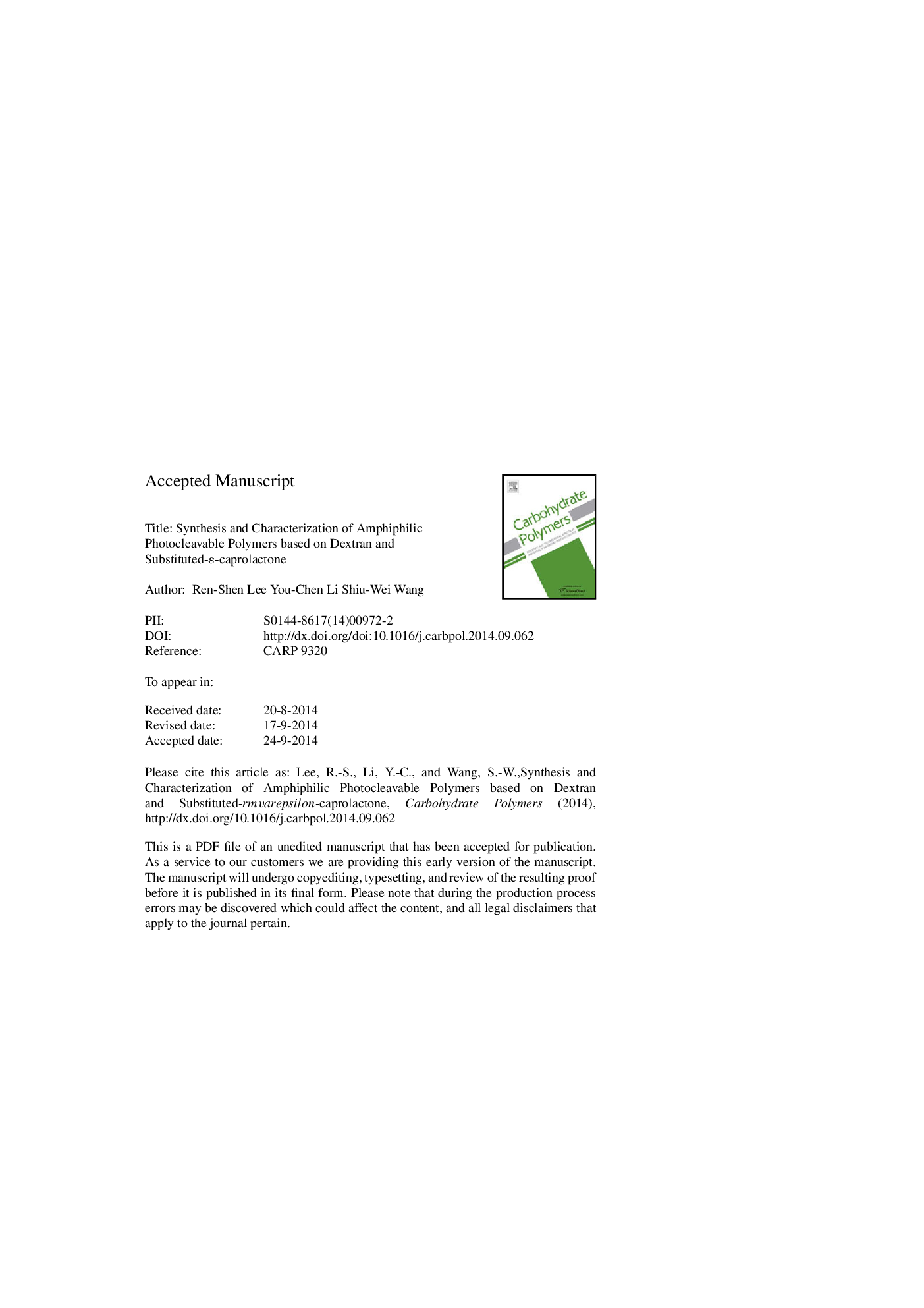| Article ID | Journal | Published Year | Pages | File Type |
|---|---|---|---|---|
| 7789560 | Carbohydrate Polymers | 2015 | 43 Pages |
Abstract
In this study, we synthesized photocleavable amphiphilic block copolymers containing photodegradable linkers, 5-hydroxy-2-nitrobenzyl alcohol, as junction points between hydrophilic dextran (or maltodextrin) and hydrophobic poly(4-substituted-É-caprolactone) chains, by using a combination of ring-opening polymerization and nucleophilic substitution reactions. When the polymer solutions were exposed to ultraviolet (UV) irradiation, major structural and morphological changes were observed in the particles. The copolymers were biodegradable and biocompatible, and they can self-assemble into spherical photoresponsive micelles. Fluorescence emission measurements indicated the release of Nile red, a hydrophobic dye, encapsulated by the Dex-ONB-PXCL micelles, in response to irradiation caused by the disruption of the micelles. Light-triggered bursts were observed for indomethacin (IMC)-loaded Dex-ONB-PXCL micelles during the first 5 h. The nanoparticles were associated with nonsignificant toxicity at concentrations of less than 100 μg mLâ1. The confocal microscopy and flow cytometry results showed that the uptake of DOX-loaded micelles by HeLa cells was slightly less than that of free DOX, and it was predominantly retained in the cytoplasm.
Related Topics
Physical Sciences and Engineering
Chemistry
Organic Chemistry
Authors
Ren-Shen Lee, You-Chen Li, Shiu-Wei Wang,
